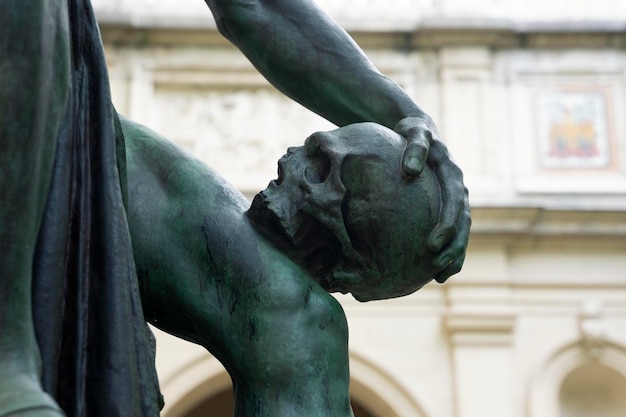Discovering Fascinating Facts about Michelangelo

Michelangelo’s full name was Michelangelo di Lodovico Buonarroti Simoni.
He was born on March 6, 1475, in Caprese, Italy.
Michelangelo was a renowned sculptor, painter, and architect of the Renaissance period.
His most famous work is the ceiling of the Sistine Chapel in Vatican City.
Michelangelo’s other famous sculptures include the David, Moses, and the Pieta.
Despite being known for his artistic talent, Michelangelo considered himself primarily a sculptor.
He began studying art at the young age of 13 and was mentored by painter Domenico Ghirlandaio.
Michelangelo was known for his temperamental nature and had a difficult relationship with his patrons.
He often worked for powerful families such as the Medici and the Catholic Church.
Michelangelo’s father initially wanted him to become a merchant and disapproved of his artistic aspirations.
He was a devout Catholic and his religious beliefs greatly influenced his artwork.
Michelangelo’s Florence Pieta is the only sculpture he ever signed.
He was known for his perfectionism and would often destroy his own artwork if he deemed it unsatisfactory.
Michelangelo never married or had children, and he lived a predominantly solitary life.
The famous artist Leonardo da Vinci was one of Michelangelo’s contemporaries.
Michelangelo’s work was highly regarded during his lifetime, and he was often commissioned by influential figures.
Discovering Fascinating Facts about Michelangelo part 2
He was responsible for the design of St. Peter’s Basilica in Vatican City.
Michelangelo’s artwork reflects the humanist ideals of the Renaissance, focusing on the beauty of the human form.
He was known for his ability to capture emotion and intensity in his sculptures and paintings.
Michelangelo often portrayed biblical and mythological figures in his artwork.
The sculpture of David is considered a symbol of Florence and the Italian Renaissance.
The Sistine Chapel ceiling took Michelangelo four years to complete, from 1508 to 15
He painted the ceiling lying on his back, which caused significant strain on his eyes and neck.
Despite having limited experience in fresco painting, Michelangelo’s work on the Sistine Chapel ceiling is considered a masterpiece.
Michelangelo’s Last Judgment is another famous fresco displayed on the altar wall of the Sistine Chapel.
After completing the Sistine Chapel, Michelangelo returned to sculpting and worked on the Medici Chapel in Florence.
He was appointed as the principal architect and supervising engineer of St. Peter’s Basilica in 1546.
Michelangelo designed the famous dome of St. Peter’s Basilica, which remains an architectural marvel to this day.
The famous quote attributed to Michelangelo, I saw the angel in the marble and carved until I set him free, reflects his belief in revealing the sculpture within the stone.
Michelangelo’s works continue to inspire artists and art enthusiasts around the world to this day.
His artistic legacy is seen as a pinnacle of the Italian Renaissance and a testament to human creativity and skill.
Michelangelo’s drawings and sketches, known as his cartoons, are highly sought after by collectors.
His vast body of work also includes poetry and architectural designs.
Michelangelo was a deep thinker and often contemplated existential and philosophical questions.
He was a dedicated student of anatomy, conducting dissections to improve his understanding of the human body.
Michelangelo’s mastery of the human form is evident in his sculptures, which showcase realistic proportions and musculature.
He had a keen eye for detail and would often add subtle symbolic elements to his artwork.
Michelangelo’s paintings and sculptures were celebrated for their ability to convey movement and dynamic energy.
Despite his success as an artist, Michelangelo was known to be very self-critical and had a low opinion of his own work.
He had a strong work ethic and would often work tirelessly for hours on end, neglecting his health and personal comfort.
Michelangelo’s art has been widely studied and analyzed by art historians, who continue to find new meaning and interpretations in his work.
His works have been influential in shaping the development of Western art and continue to be studied by aspiring artists and art students.
Michelangelo’s artistic style had a lasting impact on subsequent generations of artists, particularly during the Mannerist and Baroque periods.
He played a crucial role in elevating the status of the artist from craftsman to esteemed creator.
Michelangelo’s legacy as a master of the arts is forever etched in history, leaving a lasting impact on the world of art and culture.